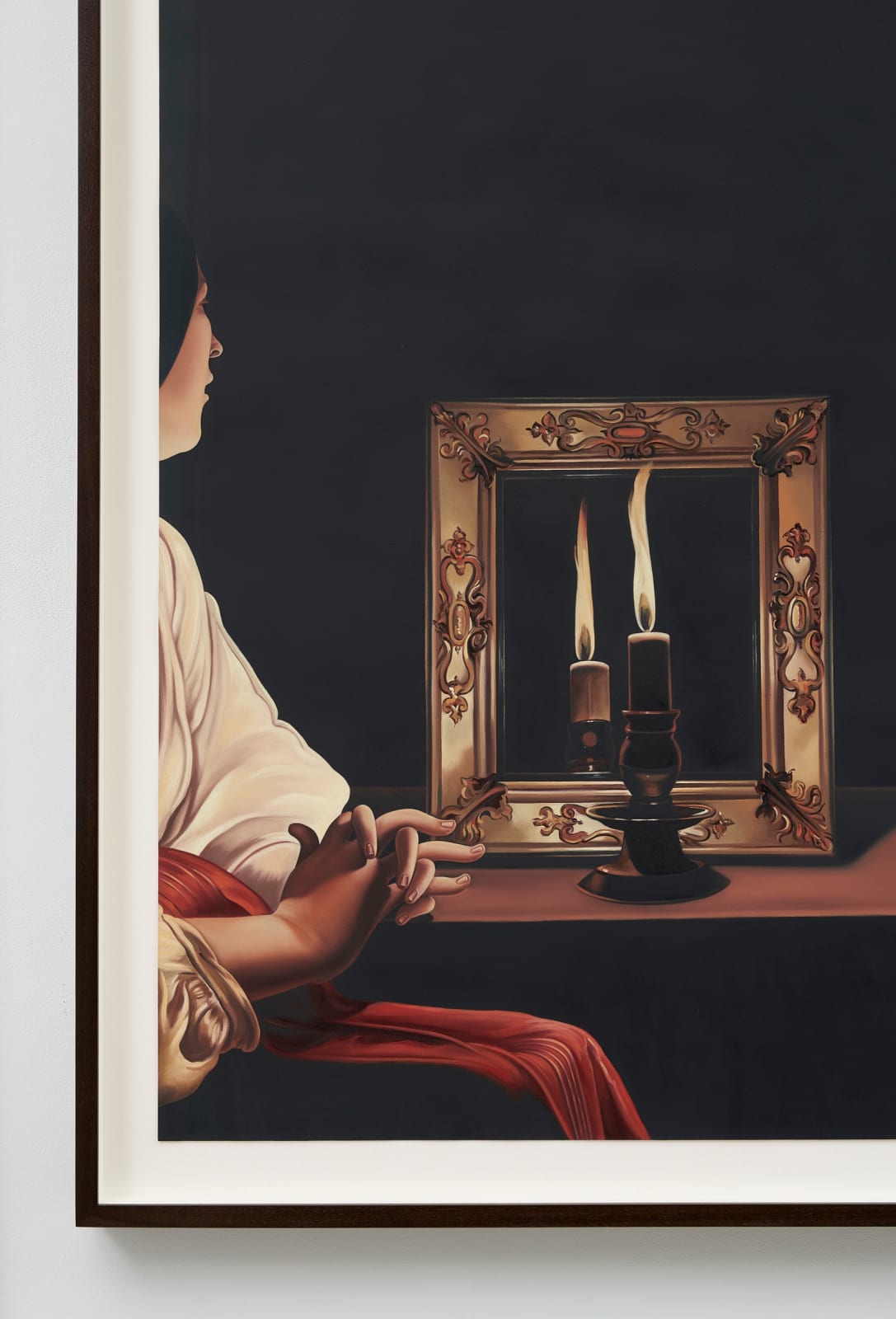-
Artworks





Ever-lustful, 2022
Oil on paper51 x 34.75 in / 129.5 x 88.3 cm each
Outer dimensions 56 x 75 in / 142.2 x 190.5 cmSoldFurther images
Jesse Mockrin’s latest body of work explores historical representations of women with mirrors, ranging from scenes of the toilette to biblical and mythological narratives of reflection. For centuries, images of...Jesse Mockrin’s latest body of work explores historical representations of women with mirrors, ranging from scenes of the toilette to biblical and mythological narratives of reflection. For centuries, images of women have largely been painted by male artists who often depict women’s beauty and nudity in the service of revealing an innate feminine vanity, greed, or wantonness. Mockrin asks whose narcissism and gratification is truly on display.
In Mockrin’s largest work on paper to date, a dramatic oil on paper diptych entitled “Ever-lustful”, Mockrin recontextualizes George de La Tour’s 1640s depictions of a contemplative Mary Magdalene. Here, symbols of vanitas such as a candle, oil lamp flame, and gilded mirror are emphasized and provide theatrical, otherworldly illumination to an infamously misunderstood figure
The popularized misinterpretation of Mary Magdalene as repentant sinner and former prostitute stems from Pope Gregory I's 591 AD incorrect conflation of Mary Magdalene with Mary of Bethany. As Mockrin reflects, "This trait of Magdalene's as 'sinful woman' is something she acquired through millennia of misinformation, spread mostly by men. It raises an interesting parallel with how women's credibility is attacked in the same ways now, and how misinformation spreads and causes damage."









